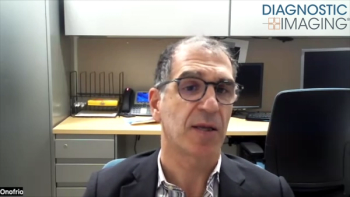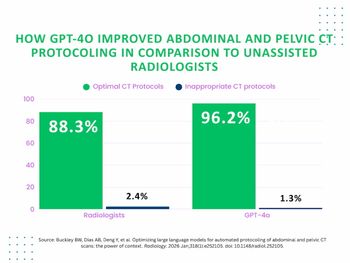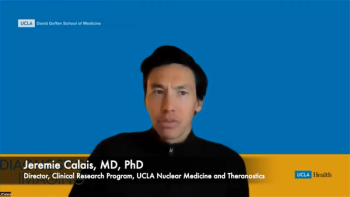
Silver Lining for Radiology in Recent Medicare Reimbursement Policy
Radiology saw some wins in recent Medicare policy provisions, according to experts at AHRA 2014.
The Protecting Access to Medicare Act (PAMA, also known as H.R. 4302), was the big Medicare bill for 2014, Pamela Kassing, senior economic advisor for economics and health policy at the American College of Radiology, said at AHRA 2014.
The bill, which was signed by President Barack Obama on April 1, 2014, was a victory for imaging legislation, Kassing said. The legislation overrides the 24 percent cut to Medicare reimbursement to physicians that was supposed to occur on April 1, delaying its enactment until March 2015.
The delay was especially important, Kassing said, because the upcoming year is an election year. This means less work will get done on the Hill, which effectively pushes physicians through the election period until the new congress starts working on legislation next year.[[{"type":"media","view_mode":"media_crop","fid":"27353","attributes":{"alt":"","class":"media-image media-image-right","id":"media_crop_5900415635464","media_crop_h":"0","media_crop_image_style":"-1","media_crop_instance":"2645","media_crop_rotate":"0","media_crop_scale_h":"0","media_crop_scale_w":"0","media_crop_w":"0","media_crop_x":"0","media_crop_y":"0","style":"border-width: 0px; border-style: solid; margin: 1px; float: right;","title":" ","typeof":"foaf:Image"}}]]
Medical societies opposed the bill and its delay, hoping for a permanent SGR fix rather than a temporary one, but the bill was a success for radiology, Kassing said.
“Radiology was the only specialty that was able to get anything passed in this bill,” Kassing said. “We, as radiology, happened to be very successful in passing important issues that we have been looking to get passed for many years,” Kassing said.
Appropriateness Criteria
The first imaging-specific provision requires the use of appropriateness criteria through a clinical decision support project when referring Medicare patients for advanced diagnostic imaging services. Kassing noted that this was in competition with the radiology benefit management companies, stating plainly: “We don’t want Medicare to use them, we think they would tie up and be paid money that could stay in the Medicare system and they do not provide education to physicians in team-based care.”
“We have our own proposal here for use of clinical decision support with radiologists providing consultation,” Kassing said. “This is also our way of offering to the hill for radiologists to show that they are ready to get involved in new payment models in the future, so this is one of our new payment models.”
Code Dampening
Since 2006, radiology has seen 12 cuts in the technical component and some in the professional component, some of which have been significant. To mitigate this, HR 4302 included a code dampening policy, mandating that any significant cuts be phased in over two years. The policy goes into effect in 2017.
Multiple Procedure Payment Reduction Policy
In 2012, the Centers for Medicare and Medicaid Services included a 25 percent multiple procedure payment reduction policy (MPPR) to the professional component of advanced diagnostic imaging services in its final physician fee schedule rule. The policy was expanded in the 2013 physician fee schedule final rule. Today, the policy mandates a 25 percent cut to the professional component MPPR applies equally to individual and multiple radiologists interpreting multiple imaging studies from the same patient on the same day, according to the ACR.
“[The ACR] has revealed what we think are efficiencies in this policy, and it comes nowhere near 25 percent, so we don’t know how Medicare got to 25 percent cuts. Our analysis shows anywhere from two and seven percent,” Kassing said. “And so we would like Medicare to not continue to impose cuts on radiology but start to show data on where they are getting the cuts from and justifying it.”
HR 4302 includes a provision that the Secretary of Health and Human services publicly disclose this data.
Newsletter
Stay at the forefront of radiology with the Diagnostic Imaging newsletter, delivering the latest news, clinical insights, and imaging advancements for today’s radiologists.




























